Turn up in the Territory in spring and you’ll find we’ve kicked off summer early up here. Spoiler alert: we never really turned down the sunshine dial. While it remains chilly down south we’ve been basking in warm days bathed in spring sunshine. With fewer crowds and great holiday deals, spring is a great time to holiday in the NT.
Yearning for a piece of this sun-drenched spring action too? Here’s 10 reasons to visit the Territory this spring.
1. Turn up to fish for the famed NT barramundi
Fishing is all about the lure of catching the ‘big one’. In the Territory it’s also about barramundi – the prized catch which every angler pursues. Whether you’re an absolute newbie casting your first line or an experienced angler with a swag of fishing stories under your belt, you’re in with a chance of hooking a barra. The NT has the largest number of barra in Australia, so the odds are definitely in your favour to hook one of these prized sports fish specimens.
Book your spot on a fishing charter from Darwin or venture further afield into Arnhem Land where the fishing is some of the world’s best. Want to take it up a notch? Take a heli fishing expedition for the ultimate NT barramundi adventure.
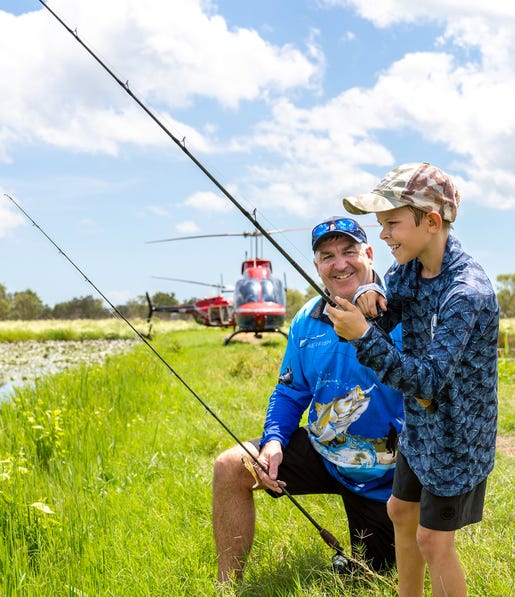
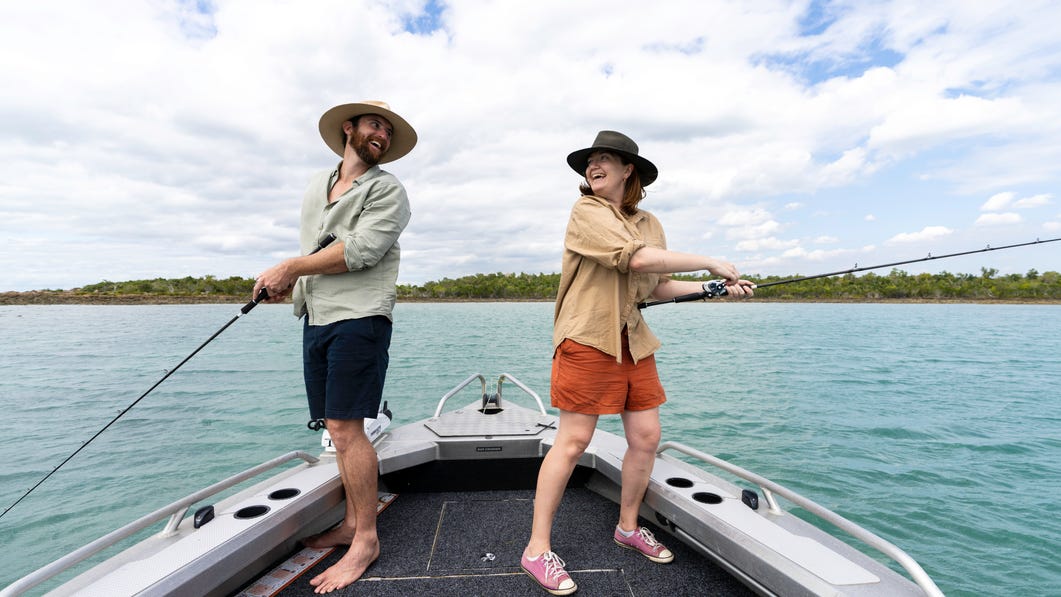
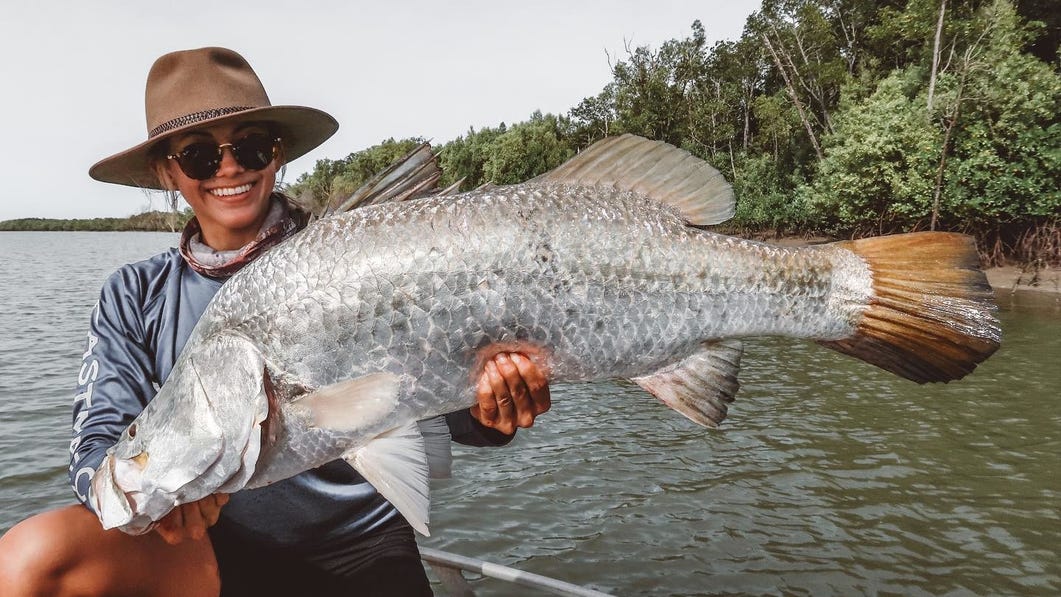
2. Turn up to meet Aboriginal artists as they create artworks
The Territory’s Aboriginal art is sought after by collectors across the globe, and there are plenty of places where you can purchase your own authentic Aboriginal artwork. Follow the Top End Territory Arts Trail or drive the Red Centre Arts Trail.
You’ll find opportunities to meet the artists and watch them create unique works of art that you won’t find anywhere else. There are art centres in locations across the NT from small community art centres to world-renown galleries like the Museum and Art Gallery of the Northern Territory (MAGNT). Take a day tour to the Tiwi Islands north of Darwin to view galleries and a museum to learn about the region’s Aboriginal cultural heritage.
In the Red Centre sit with the Maruku artists near Uluru and take home your own masterpiece too. Or join in the many Aboriginal art festivals and events held all over the NT, like the Darwin Aboriginal Art Fair, Gunbalanya Stone Country Festival in West Arnhem Land or Desert Mob in Alice Springs.
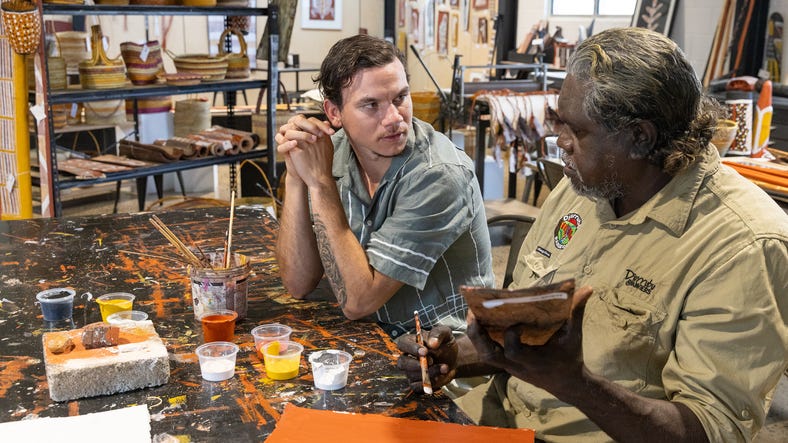

3. Turn up early to cruise Nitmiluk (Katherine) Gorge at dawn
It’s worth the early morning wake up call to cruise through Nitmiluk (Katherine) Gorge in Nitmiluk National Park as dawn breaks. Glide gently through the gorges as golden light catches the mist rising from Katherine River. See ancient Aboriginal rock art and admire the changing colours of the cliff faces lining the gorge while learning about the region’s cultural significance to Jawoyn people from your guide.
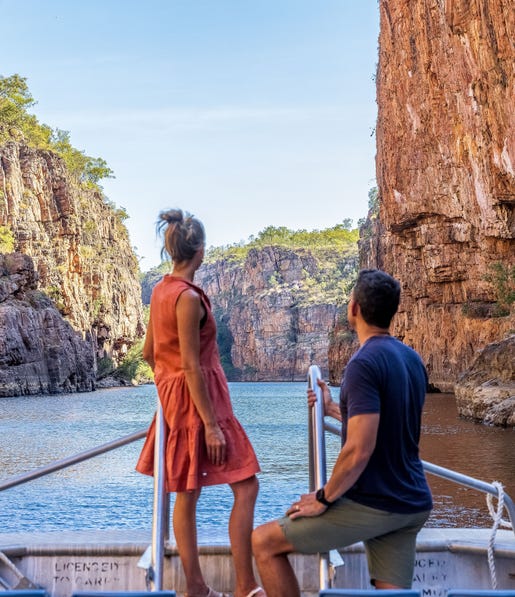
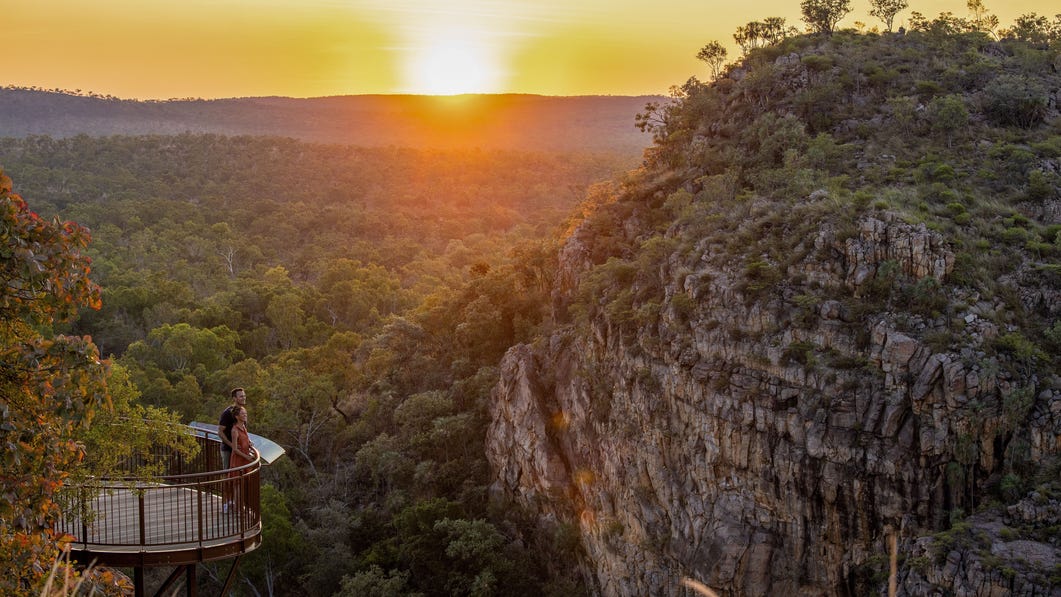
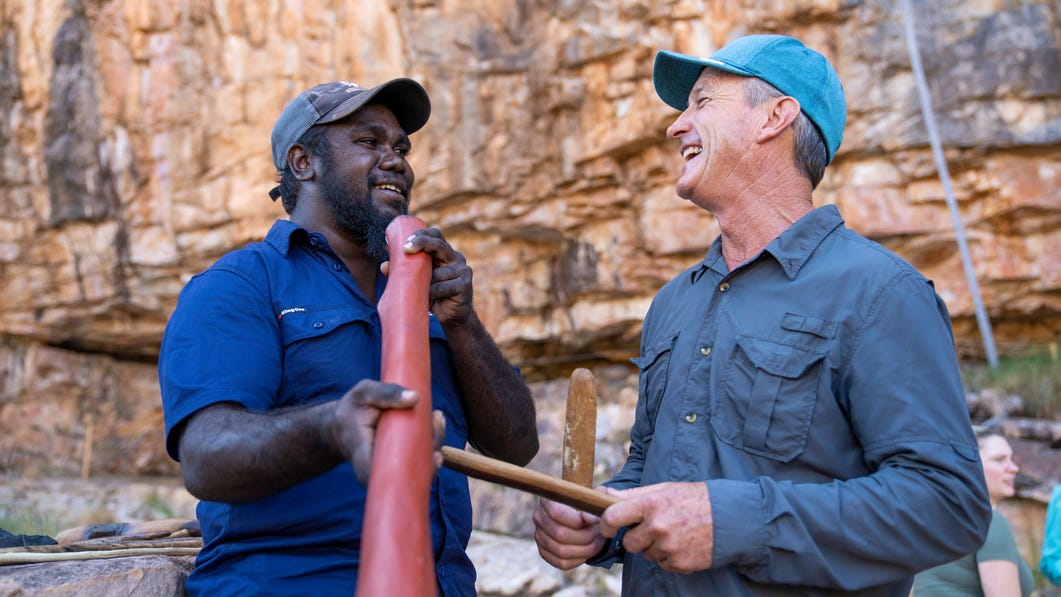
4. Turn up at Kakadu NP to see ancient Aboriginal rock art
Kakadu National Park is Australia’s second largest national park (Munga-Thiri-Simpson Desert NP is the largest), so allow plenty of time to see some of the park’s extraordinary highlights. A living cultural landscape little changed since millennia, Kakadu was bestowed with World Heritage status for its exceptional natural and cultural values.
The park is home to one of the world’s greatest cluster of Aboriginal rock art with more than 5,000 documented sites. Some are dated at more than 20,000 years old though archaeological dating confirms Aboriginal inhabitation at more than 40,000 years.
Visit Kakadu’s rock art galleries at Ubirr, Burrungkuy (Nourlangie) and Nanguluwurr Rock Art Walk where you’ll see images of animals, Dreamtime figures, traditional x-ray art and paintings of early contact with European people.

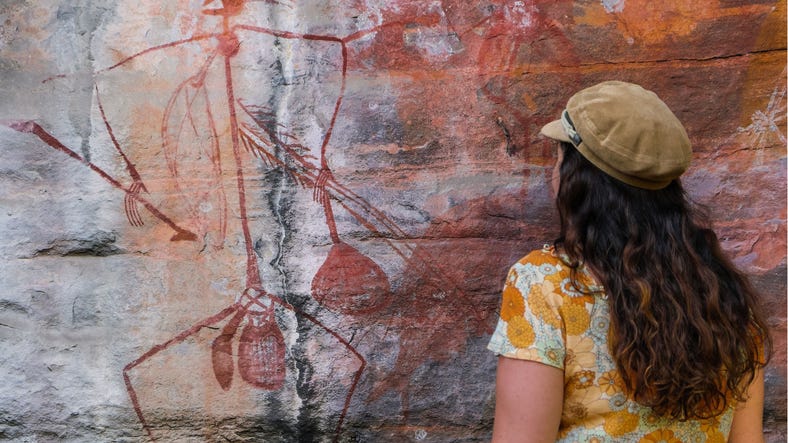
5. Turn up at sunset to view the changing colours of Uluru at sunset
One of the best times to view the mammoth monolith of Uluru is at dawn at dusk when its flanks change colours with rising and setting sun. At sunset Uluru morphs through sizzling red to burnt orange to a deep purple as day turns to twilight and the sky turns into a pastel pallet.
At sunrise the reverse happens and is well worth rising early to see Uluru revealed from the darkness. Sunrise and sunset viewpoints are located within the park to ensure the best views.
Time your visit to take in additional experiences, some of which include dinner or canapes and drinks, such as the Field of Light (at sunrise or sunset). Or Wintijiri Wiru (sunset only), a choreographed sound and light show bringing the ancient Mala story of the Anangu people to life.
Another unique way to view Uluru is from atop the hump of a camel on a guided camel tour (sunrise, sunset and day tours).
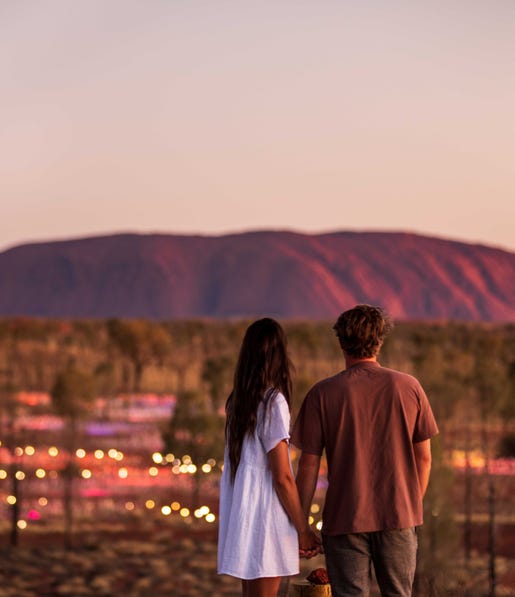
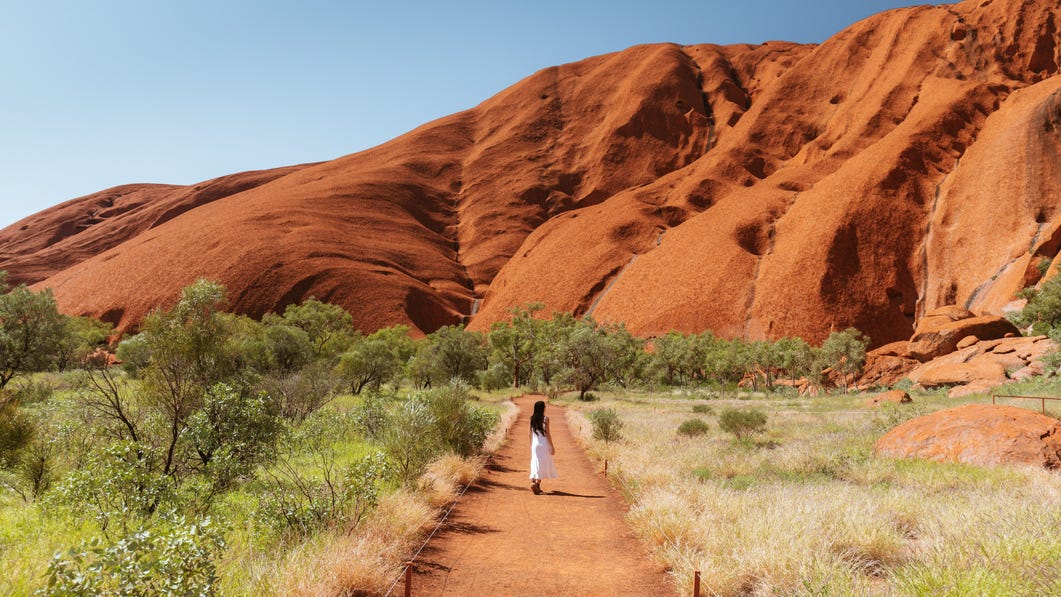
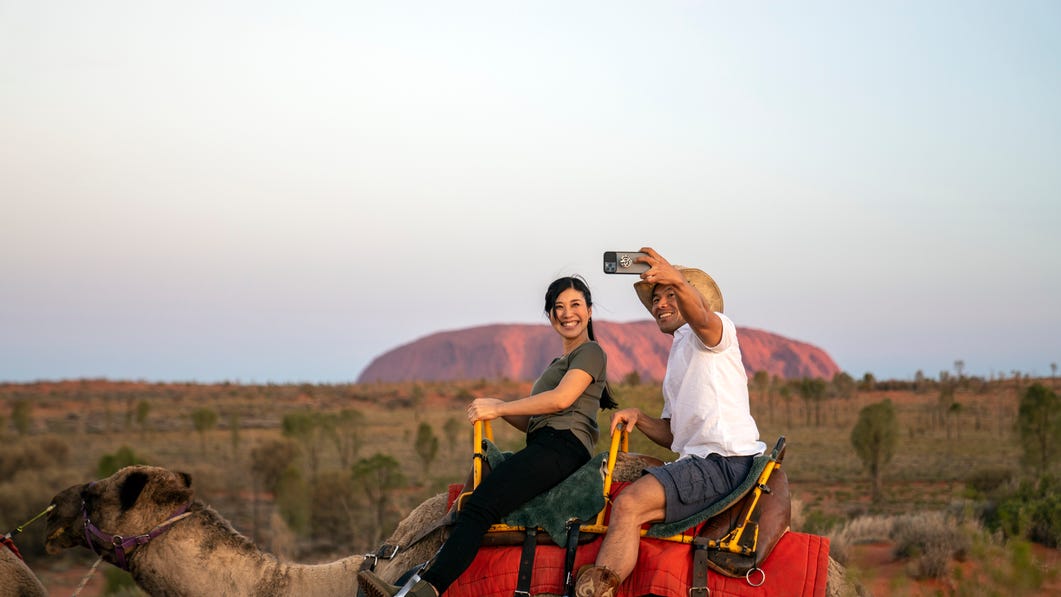
6. Turn up with your walking shoes to see the soaring domes of Kata Tjuta
Kata Tjuta (the Olgas) often takes a back seat to its more well-known cousin Uluru. Just a short 20 minute drive from Uluru, it’s well worth the visit, both for its cultural heritage as well to admire the striking desert landscape.
Whether you visit during the day and walk either of the two walking trails, or visit at sunset to enjoy the colourful spectacle as the 36 domes absorb the golden sunlight, Kata Tjuta is as equally impressive as Uluru. Walpa Gorge Walk is moderately easy, while Valley of the Winds Walk is more challenging. Two lookout points offer exceptional views of the domes – keep a lookout for red kangaroos, Mala (rufous hare-wallaby) and dingos which inhabit the park. Allow 4 hours for entire circuit or walk an out-and-back to the viewpoints.
Both Uluru and Kata Tjuta hold cultural significance to Anangu people and visitors should stay on marked trails and observe all cultural protocols.
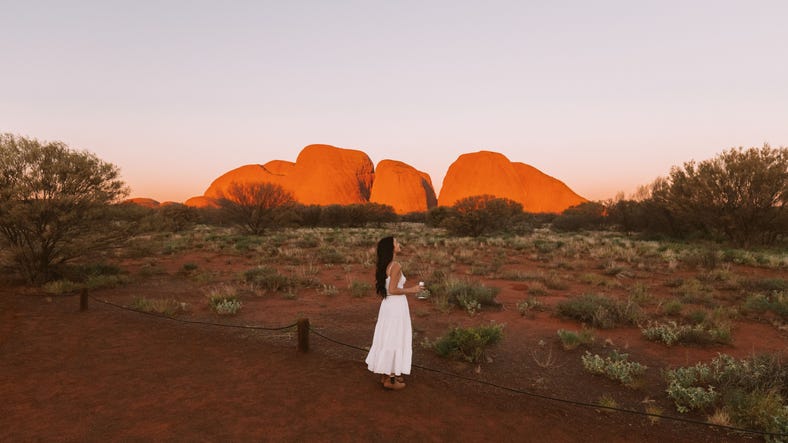
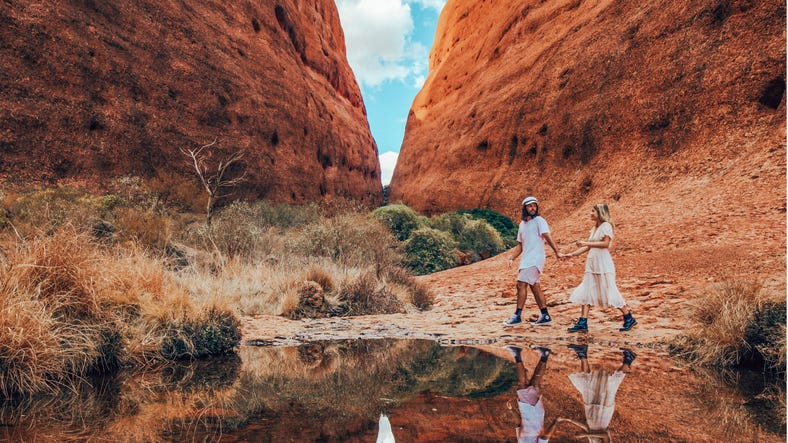
7. Turn up with your swimsuit & sense of adventure to explore the West Macs
Take a self-guided road trip or join a tour in the Red Centre to explore all the sites of Tjoritja/West MacDonnell Ranges near Alice Springs.
Pack your swimsuit and take a dip in one of the many waterholes, such as Glen Helen Gorge, Ellery Creek Big Hole, Ormiston Gorge or Redbank Gorge.
Explore the desert country and its red rock escarpments, including Standley Chasm – Angkerle Atwatye, where vertical cliffs glow shades of orange through deep red when the sunshine hits the sandstone. At Simpsons Gap, look for the rock wallabies which can often be seen hopping amongst the rocks beyond the dry riverbed. Visit the West Macs on a day trip from Alice Springs or take a tent and book at one of the many campsites.
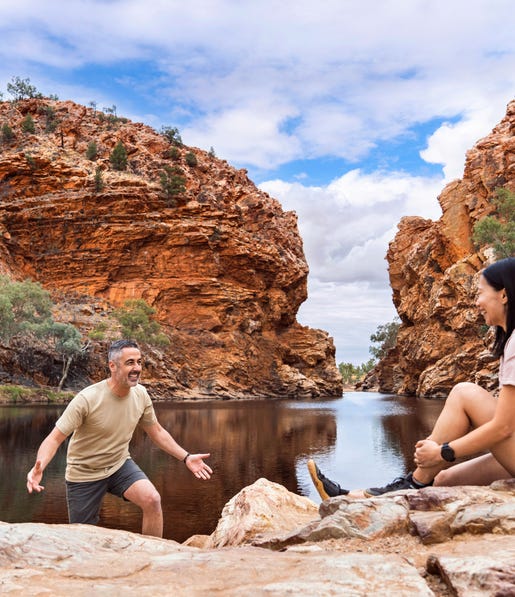
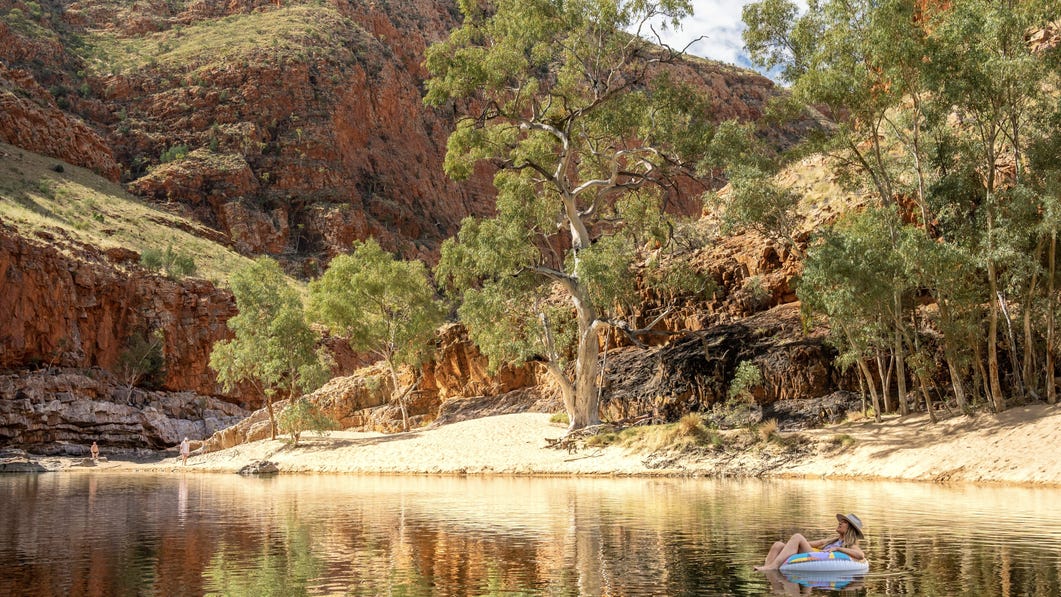
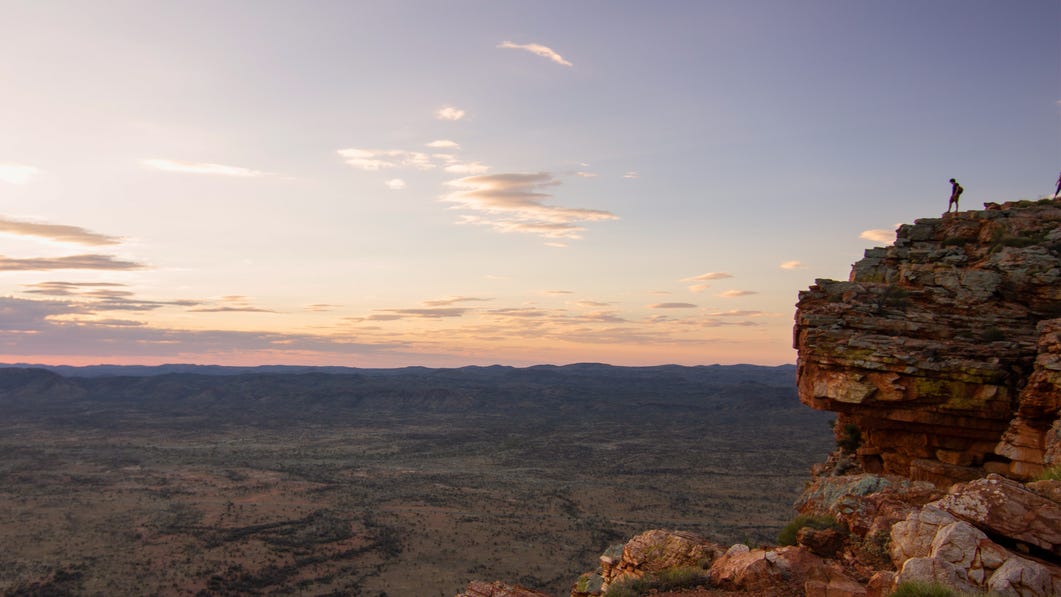
8. Turn up your taste buds at Darwin's multi-cultural food & markets scene
Thursdays and Sundays during the Top End’s dry season (May–October) herald one of Darwin’s biggest drawcards: the Mindil Beach Sunset Markets. Wander around countless food stalls that serve dishes from every corner of the earth – Thai and Indian to Brazilian and Portuguese. Try fragrant paella bejewelled with mussels, a Japanese omelette with sticky sauce, authentic laksa or a fresh mango smoothie. Eat on the beach as the sun sinks into the ocean right in front of your eyes.
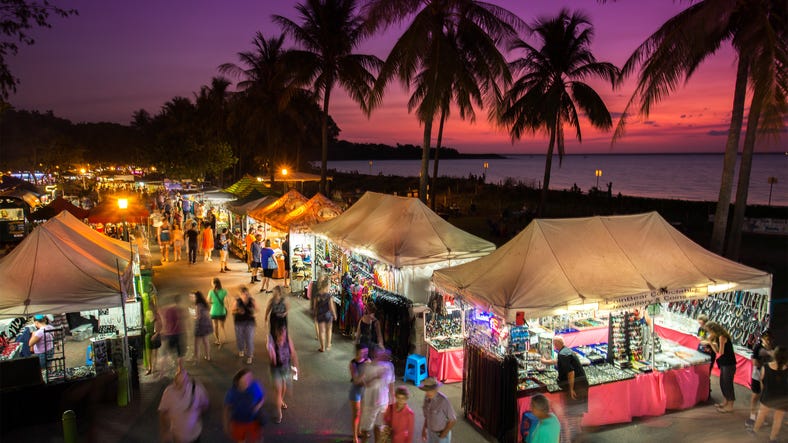

9. Turn up for waterfall swims & walks
Litchfield National Park, a local’s favourite weekend escape as approximately one hours’ drive from Darwin. The 1,500sq km park is part of an ancient landscape carved from sandstone by water. Waterfalls and swimming holes remain one of its main attractions, along with walking trails and campsites all within easy reach.
Picnic on the grassy foreshore (or in the seasonal café), swim in the waterhole and feel the power of impressive twin cascades of Wangi Falls. (note: swimming hole is closed from October – March, though camping is open year-round). A short walking trail loops around the top of the falls and the treetop viewing platform which also links up with the longer Tabletop Track.
While visiting Litchfield don’t miss swimming at Florence Falls with its rock pool lined by lush forest, and Buley Rockhole, a small rock pool with a number of tiered cascades. If you’ve got a 4WD, avoid the crowds and take the off-road track to Tjaynera Falls (Sandy Creek) where you’ll find a plunge pool at the base of waterfall.
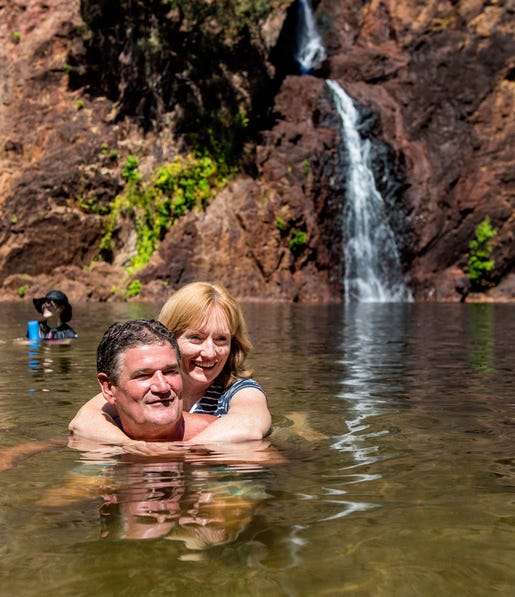
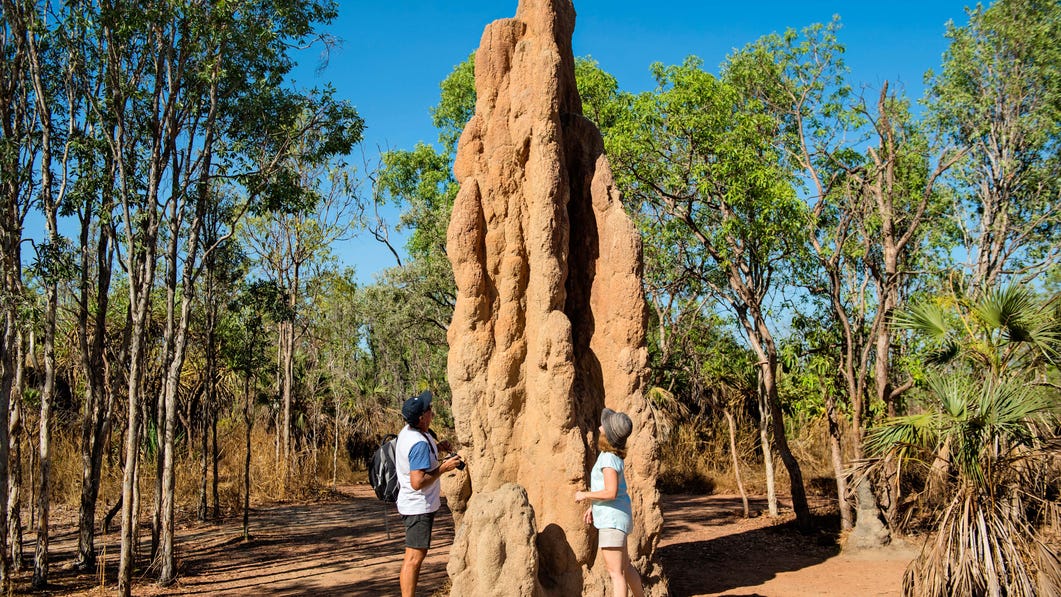
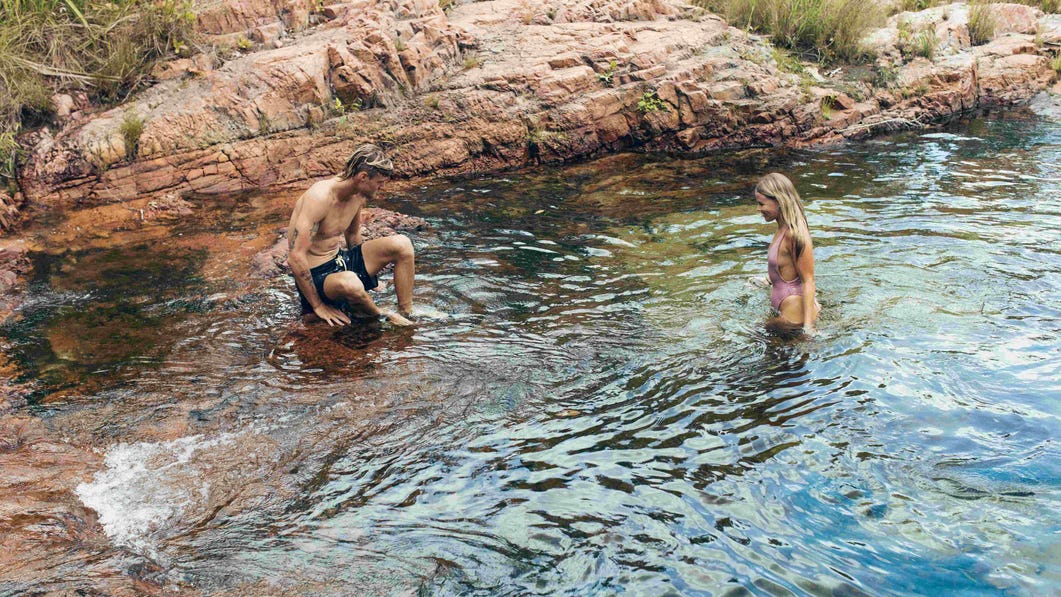
10. Turn up at sunset to see Karlu Karlu (the Devils Marbles) glowing golden
One hour’s drive south of Tennant Creek down the Stuart Highway is Karlu Karlu (the Devils Marbles) conservation reserve. Here, a cluster of ancient granite boulders balance, precariously defying gravity. Best viewed at sunset when the ‘marbles’ are bathed in the golden glow of afternoon sunlight, the area is a sacred site to the Warumungu people. Walkways wind around the monoliths with interpretive signage providing insights to both geological and cultural significance of this ancient landscape.
Book an overnight campsite to ensure you’re there bright and early to catch the sunrise as Karlu Karlu emerges from the darkness.
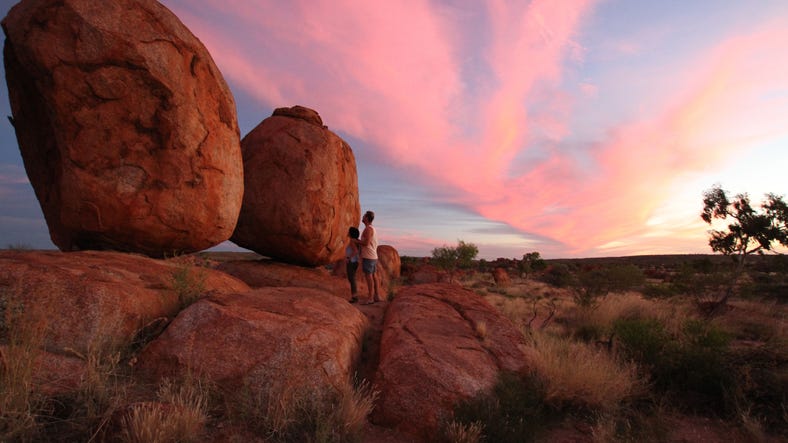
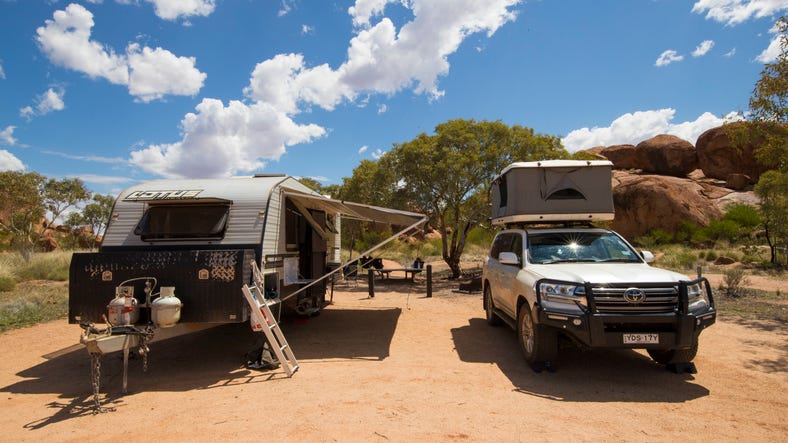
Keep exploring
More articles you might like





